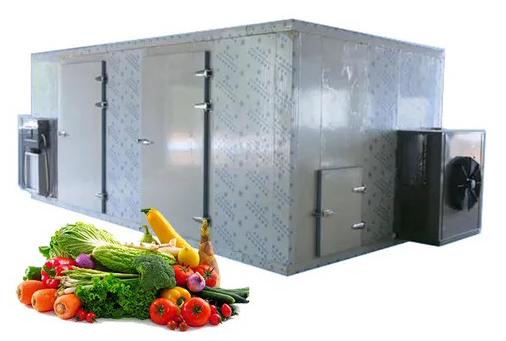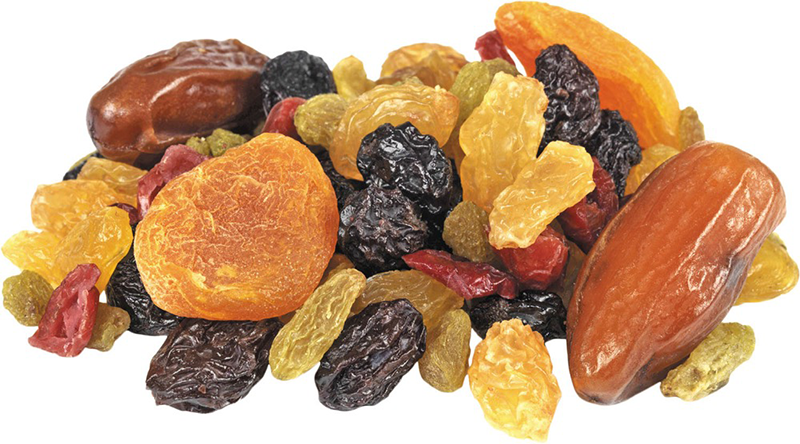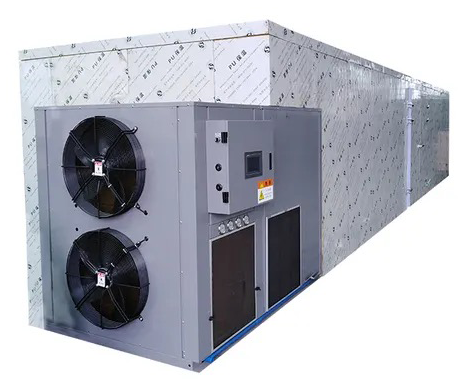
Content Menu
● What is a Food Drying Machine?
>> Types of Food Drying Machines
● How Do Food Drying Machines Work?
>> The Drying Process Explained
● Benefits of Using Food Drying Machines
● Common Issues with Heat Pump Dryers
● Optimizing Your Drying Process
● Innovations in Food Drying Technology
● Conclusion
● FAQ
>> 1. Why does my heat pump dryer take so long?
>> 2. What types of foods can I dry?
>> 3. How do I know when my food is properly dried?
>> 4. Can I use my dehydrator for making jerky?
>> 5. Is it necessary to pre-treat fruits before dehydrating?
● Citations:
Food drying machines, particularly heat pump dryers, are vital in the food processing industry, especially for preserving fruits, vegetables, and meats. This article delves into the intricacies of food drying machines, their benefits, operational principles, and how they compare to traditional methods. Additionally, we will explore common issues related to drying times and provide insights into optimizing the drying process.

What is a Food Drying Machine?
A food drying machine is designed to remove moisture from food items to extend their shelf life and preserve their nutritional value. This process inhibits the growth of bacteria, yeast, and mold that can spoil food.
Types of Food Drying Machines
- Heat Pump Dryers: Utilize a heat pump system to circulate warm air and remove moisture efficiently.
- Convection Ovens: Use heated air to dry food but may not be as energy-efficient as dedicated dehydrators.
- Solar Dryers: Harness solar energy for drying but depend heavily on weather conditions.
- Microwave Dryers: Use microwave radiation to evaporate moisture quickly.
- Commercial Dehydrators: Designed for large-scale operations, these machines can handle significant quantities of food and often have advanced features for precise control.
How Do Food Drying Machines Work?
Food dehydrators operate by circulating warm air around the food items at controlled temperatures. The basic components include:
- Heating Element: Generates heat to raise the temperature in the drying chamber.
- Fan: Circulates air to ensure even drying.
- Trays: Hold the food items in a single layer for optimal air flow.
The process typically involves setting the desired temperature and humidity levels. For instance, fruits may require a higher temperature (around 135°F) compared to vegetables (125°F) or herbs (95°F).
The Drying Process Explained
1. Preparation: Before placing food in the dryer, it should be washed, peeled (if necessary), and cut into uniform pieces to ensure even drying.
2. Loading the Dryer: Place the food on trays without overcrowding them. This allows for adequate airflow around each piece.
3. Setting Temperature and Time: Adjust the settings based on the type of food being dried. Most machines come with guidelines for different foods.
4. Monitoring Progress: Check on your food periodically to ensure it is drying evenly. Rotate trays if necessary.
5. Cooling and Storage: Once dried, allow the food to cool before storing it in airtight containers to prevent moisture reabsorption.
Benefits of Using Food Drying Machines
1. Extended Shelf Life: Dried foods can last for months or even years without refrigeration.
2. Nutrient Retention: Unlike canning or cooking, dehydration preserves most nutrients.
3. Cost-Effective: Dehydrating your own food is often cheaper than buying pre-packaged dried goods.
4. Versatility: Can be used for a wide range of foods including fruits, vegetables, meats, and herbs.
5. Healthy Snack Options: Create your own snacks without preservatives or additives.
6. Reduced Waste: Dehydrating surplus produce prevents waste and allows you to enjoy seasonal fruits and vegetables year-round.
7. Convenience: Dried foods are lightweight and easy to store, making them ideal for camping or emergency preparedness kits.

Common Issues with Heat Pump Dryers
While heat pump dryers are efficient, users often encounter issues that can prolong drying times:
- High Humidity Levels: Excess humidity in the drying chamber can slow the drying process significantly.
- Improper Airflow: If trays are overcrowded or improperly arranged, airflow is restricted leading to uneven drying.
- Temperature Settings: Incorrect temperature settings can either cook the food or fail to dry it adequately.
- Dirty Filters or Coils: Dust buildup on filters or coils can reduce efficiency; regular cleaning is essential for optimal performance.
Optimizing Your Drying Process
To ensure efficient operation of your food dryer:
- Pre-Treat Your Food: Blanching vegetables before dehydrating can enhance color and flavor retention. For fruits like apples or pears, soaking them in a solution of lemon juice and water can prevent browning.
- Slice Uniformly: Cut food into uniform pieces to ensure even drying. Thicker pieces will take longer to dry compared to thinner slices.
- Maintain Airflow: Avoid overcrowding trays; leave space between items for optimal air circulation. Consider using mesh trays that allow better airflow around smaller pieces like herbs or berries.
- Monitor Humidity Levels: Keep an eye on humidity inside the dryer; consider using a dehumidifier if necessary during high humidity seasons.
- Experiment with Recipes: Try different combinations of spices or marinades before dehydrating meats or vegetables for enhanced flavors in your dried products.
Innovations in Food Drying Technology
Recent advancements in technology have led to more efficient and user-friendly food drying machines:
- Smart Technology Integration: Many modern dryers come equipped with smart technology that allows users to monitor and control their machines via smartphone apps.
- Energy Efficiency Improvements: Newer models are designed with energy-saving features that reduce electricity consumption while maintaining high performance.
- Multi-functional Devices: Some machines now offer multiple functions such as dehydrating, fermenting, and even making yogurt, providing added value for consumers looking for versatility in their kitchen appliances.
Conclusion
Food drying machines are essential tools in preserving food while maintaining its nutritional value and flavor. Understanding how these machines work and how to optimize their use can significantly enhance your food preservation efforts. Whether you are a home cook looking to save on groceries or a business aiming for efficiency in food processing, investing in a quality food dryer is a wise decision that pays off in both convenience and cost savings over time.

FAQ
1. Why does my heat pump dryer take so long?
A heat pump dryer may take longer due to high humidity levels in the environment or improper airflow caused by overcrowded trays. Ensuring proper loading and adjusting settings according to the type of food can help mitigate this issue.
2. What types of foods can I dry?
You can dry a variety of foods including fruits like apples and bananas, vegetables such as carrots and peppers, meats like beef jerky, herbs like basil and oregano, and even some grains like rice when processed correctly.
3. How do I know when my food is properly dried?
Properly dried foods should be brittle or leathery depending on the type; they should not feel sticky or moist when touched. Conducting taste tests can also help determine if further drying is needed.
4. Can I use my dehydrator for making jerky?
Yes, most dehydrators are suitable for making jerky as long as you follow safe meat handling practices prior to dehydration. Ensure that meat is sliced thinly against the grain for optimal texture.
5. Is it necessary to pre-treat fruits before dehydrating?
Pre-treating fruits with lemon juice or blanching can help preserve color and flavor but is not strictly necessary for all fruits; however, it is recommended for those prone to browning such as apples or peaches.
Citations:
[1] https://www.bxdrymachine.com/food-drying-machine.html
[2] https://en.wikipedia.org/wiki/Food_dehydrator
[3] https://www.webstaurantstore.com/guide/741/food-dehydrators-buying-guide.html
[4] https://airtekdehydrator.com
[5] https://www.alamy.com/stock-photo/food-dehydrator.html
[6] https://www.youtube.com/watch?v=mtDzdYoyeR8
[7] https://www.youtube.com/watch?v=m1K2mbk8WZo
[8] https://aradmachineryco.com/article/How-to-use-a-dehydratormachine
[9] https://www.goodhousekeeping.com/appliances/a31904157/what-is-a-dehydrator/
[10] https://etsolutions.in/10-amazing-benefits-of-electrical-food-dehydrator-machines/
[11] https://www.istockphoto.com/photos/food-dehydrator
[12] https://www.youtube.com/watch?v=lEUA2t2XD5M












